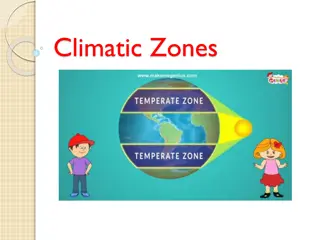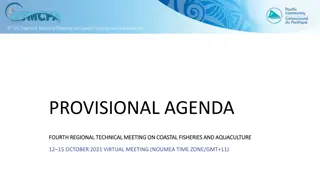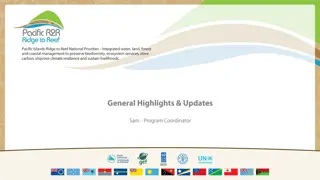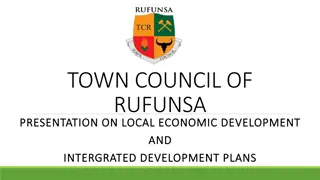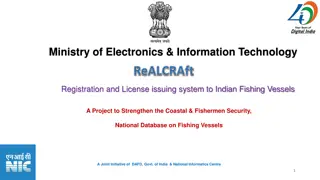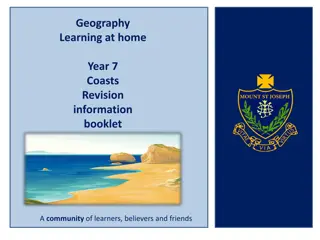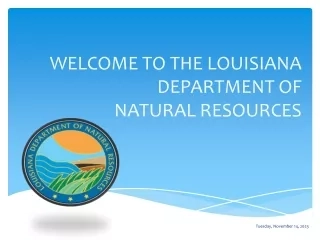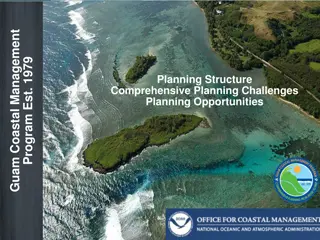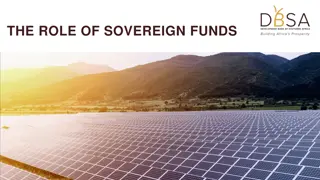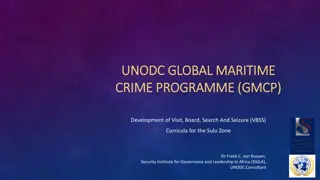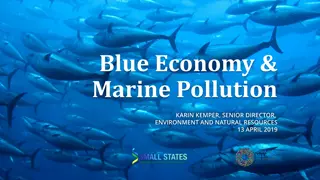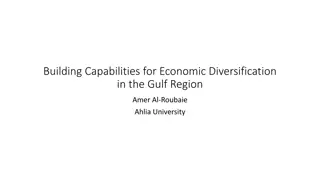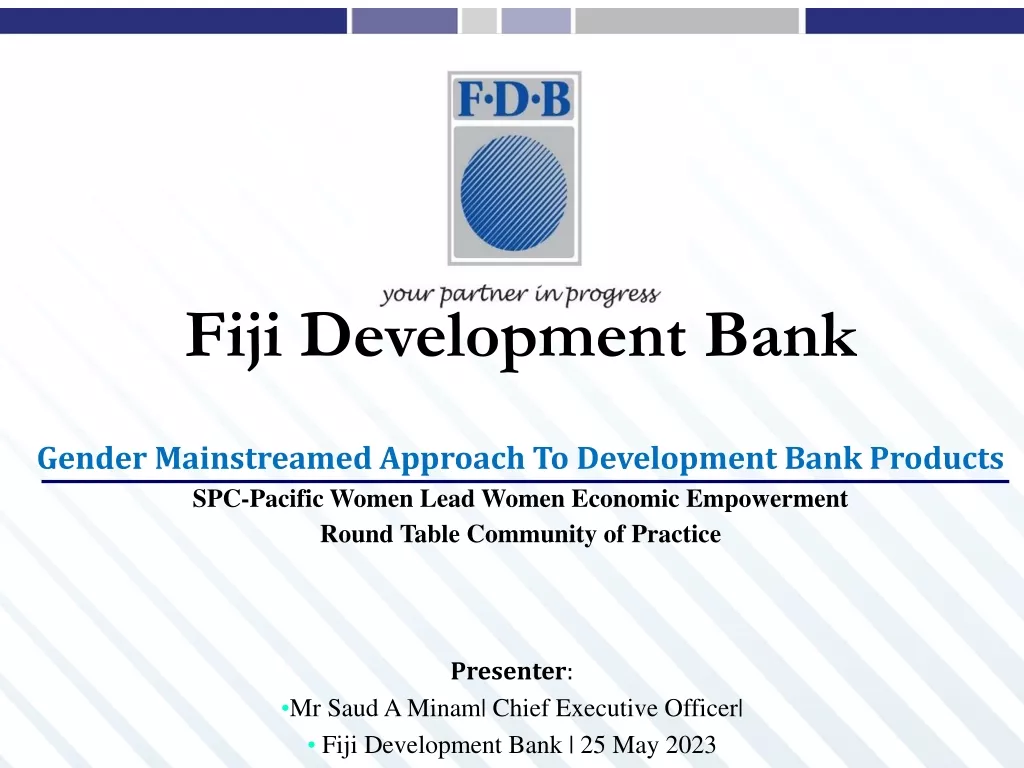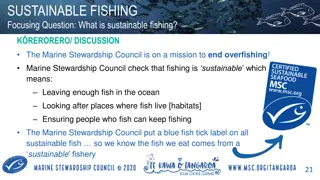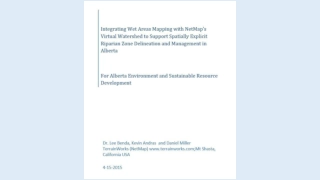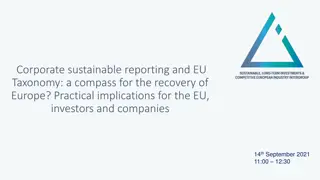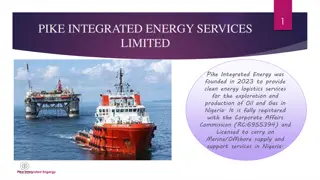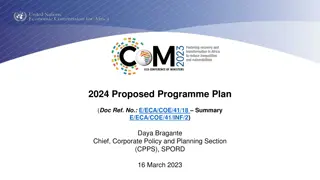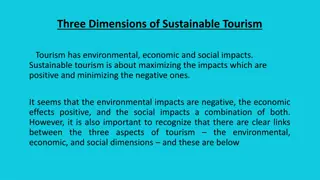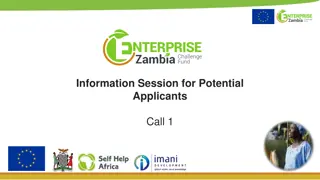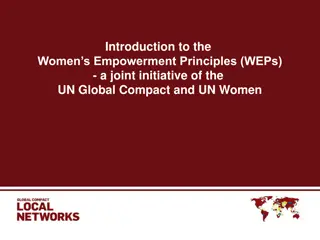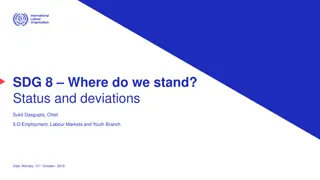Integrated Coastal Zone Management & Exclusive Economic Zone (EEZ) - Sustainable Coastal Management
The coastal zone is a vital area where land and sea interact, presenting dynamic challenges and opportunities. Integrated Coastal Zone Management (ICZM) is a science-based approach to managing coastal areas, aiming for sustainability by balancing environmental, economic, and human activities. ICZM, established in 1992, promotes a multidisciplinary process to address coastal issues through planning, decision-making, and monitoring. Implementation of ICZM involves creating legal and institutional frameworks at national and local levels, adapting to diverse coastal characteristics and socio-economic processes. Additionally, the concept of Exclusive Economic Zones (EEZ) plays a crucial role in governing maritime resources and activities within defined boundaries.
Download Presentation

Please find below an Image/Link to download the presentation.
The content on the website is provided AS IS for your information and personal use only. It may not be sold, licensed, or shared on other websites without obtaining consent from the author. Download presentation by click this link. If you encounter any issues during the download, it is possible that the publisher has removed the file from their server.
E N D
Presentation Transcript
Integrated Coastal Zone Management & Exclusive Economic Zone (EEZ) Subject Name: Industrial Fish & Fisheries 2nd YEAR/ IV Sem Paper: CC-10 RAHUL MONDAL (Asst. Prof.) Dept. of IFF ASUTOSH COLLEGE
Coastal Zone Coast is the zone of interaction between land and sea where both land & oceanic processes works. It is most dynamic, resourceful and disaster prone zone of any country. Coastal zone always include floodplains, mangroves, marshes, and fringing coral reefs. Coastal Zone Management Coastal zone management involves managing coastal areas to balance environmental, economic, human health, and human activities. Coastal Management integrates the biological, physical, and policy sciences to plan and execute sustainable solutions for environmental challenges where land meets water.
Integrated Coastal Zone Management (ICZM) (ICZM) Concept Source: This concept was borne in 1992 during the Earth Summit of Rio de Janeiro. The policy regarding ICZM is set out in the proceedings of the summit within Agenda 21, Chapter 17. Definition: A well-informed science-based coastal zone management strategy embedded in an adequate social, institutional and legal framework, can prevent many future coastal problems. This is now usually called ICZM. Aims & Objectives: ICZM is a process for the management of the coast using an integrated approach, regarding all aspects of the coastal zone, including geographical and political boundaries, in an attempt to achieve sustainability. It is a dynamic, multidisciplinary and iterative process to promote sustainable management of coastal zones. It covers the full cycle of information collection, planning (in its broadest sense), decision making, management and monitoring of implementation.
ICZM implementation: The natural and social characteristics of different parts of the coastal zone can be highly diverse. Coastal zone policy can therefore be determined only partly at the national level. The primary focus at the national level is to establish a legal, institutional and administrative framework for integrated coastal zone management. The institutional framework must provide the mandate and resources for the local implementation of ICZM. Implementation of ICZM requires that sufficient powers be delegated to local authorities. This can be a problem in countries with a strongly centralized governance culture. The coastal zone is constantly evolving through natural and socio-economic processes. ICZM shaped as a continuous process that goes through a fixed cycle according to the schedule: Plan Implementation Monitoring Plan revision Implementation Monitoring Evaluation Evaluation development This cycle is implemented at both local and national level: At local level, detailed concrete plans are developed and carried out (after endorsement at the national level) in consultation with all local and national stakeholders. At national level, national objectives and targets are defined, local plans are integrated in a national strategy and mandate and resources are allocated for implementation.
Introduction: (Concepts) The concept of EEZ was emerged for the economic purposes of the coastal state. It was initiated by Kenya in 1972 at the Geneva Session of the UN Committee on peaceful uses of the sea-bed and ocean floor beyond the limits of national jurisdiction . EEZ was enshrined in the Article 55 of the UN Convention on Law of The Sea 1982. Aim: An Exclusive Economic Zone is a sea-zone over which a coastal state has a sovereign right to explore and exploit, conserve and manage its natural resources. Definition: According to Article 55 of the UN Convention on Law of The Sea 1982, The Exclusive Economic Zone is an area beyond and adjacent to the territorial sea, subject to the specific legal regime established in Part-V, under which the rights and jurisdiction of the coastal states and the rights and freedom of other states are government by the relevant provisions of this convention.
Area of EEZ The breadth of EEZ shall not exceed 200 nautical miles (370 km) from the base lines (coastline) from which the breadth of the territorial sea is measured (ART.57 UNCLOS III 1982). (Is an area beyond to the territorial sea) Territorial water ends at 12 nmi (22km) from the coastline. The EEZ does not include the territorial sea (Coast to 12 nm) and also does not include the continental shelf beyond 200 nautical miles. The EEZ include the contiguous zone. The contiguous zone is a band of water that goes from the outer edge of the territorial sea to up to 24 nautical miles. Within the EEZ, the country has rights over natural resources. The country has jurisdiction over some activities for the reasons of environmental protection, among others. It also has to respect the rights of other countries in the EEZ such as the freedom of navigation.
Contiguous zone Source: byju s.com/ UPSC Rights of the country in the EEZ Explore and exploit, conserve and manage the natural resources (living or non-living). Produce energy from wind, currents and water. Establish and use artificial islands, structures and installations. Conduct marine scientific research. Protect and preserve the marine environment.
EEZ India: According to Sec.7 of the Territorial Waters Conventional Shelf Exclusive Economic Zone and Maritime Zones Act 1976, the breadth of EEZ is 200 nautical miles. The Central Government by notification in Official Gazette may alter the breadth. By the early eighties India obtained a wide EEZ of about 2.0134 million sq.km. in the sea all along 7500 km long coastline. The living and nonliving resources in this zone measured about two third of country. Trading and transport facilities navigated through area. Millions of people living along the coastline are directly influenced by oceanography of the EEZ. Marine fish production in India has been continuously increased from 0.58 mil tonnes in 1950 to 3.94 million tonnes in 2012. The estimated marine fishery potential of India EEZ was 3.93 million tonnes and has now been revalidated by working group constituted by Govt. of India and now the potential marine fishery resources in Indian EEZ at 4.41 million tonnes. (CMFRI, INDIA)
Both topic is very simple, kind of Managerial measure (like CRZ) to protect or restrict the use of Sea coast/ Marine environment. Mainly Short note type Question will come. Always draw a simple Diagram when you describe the EEZ. All the best. Thank You



